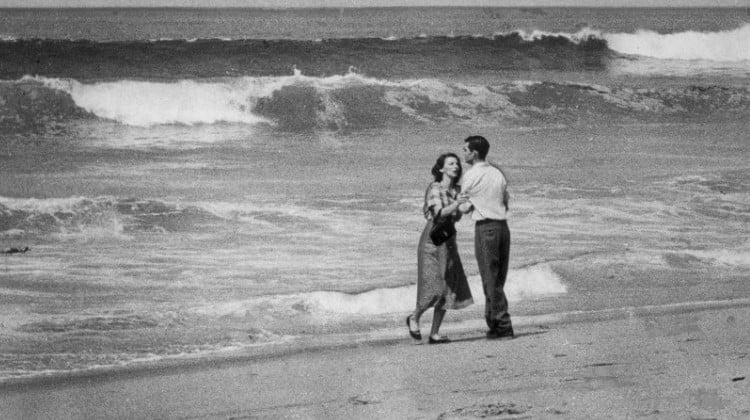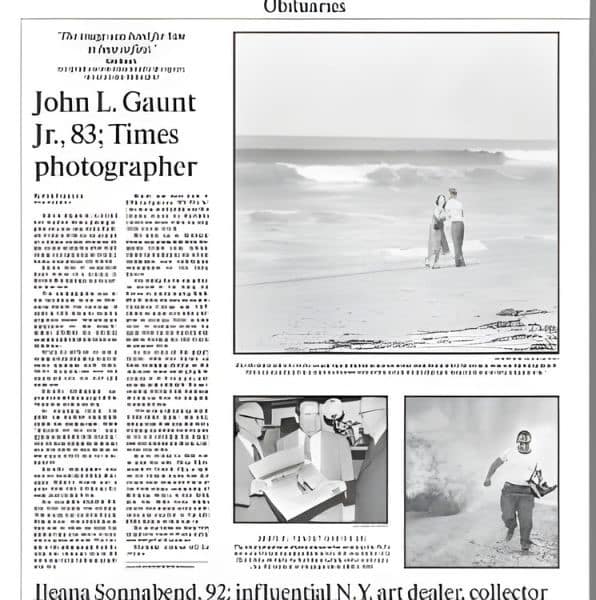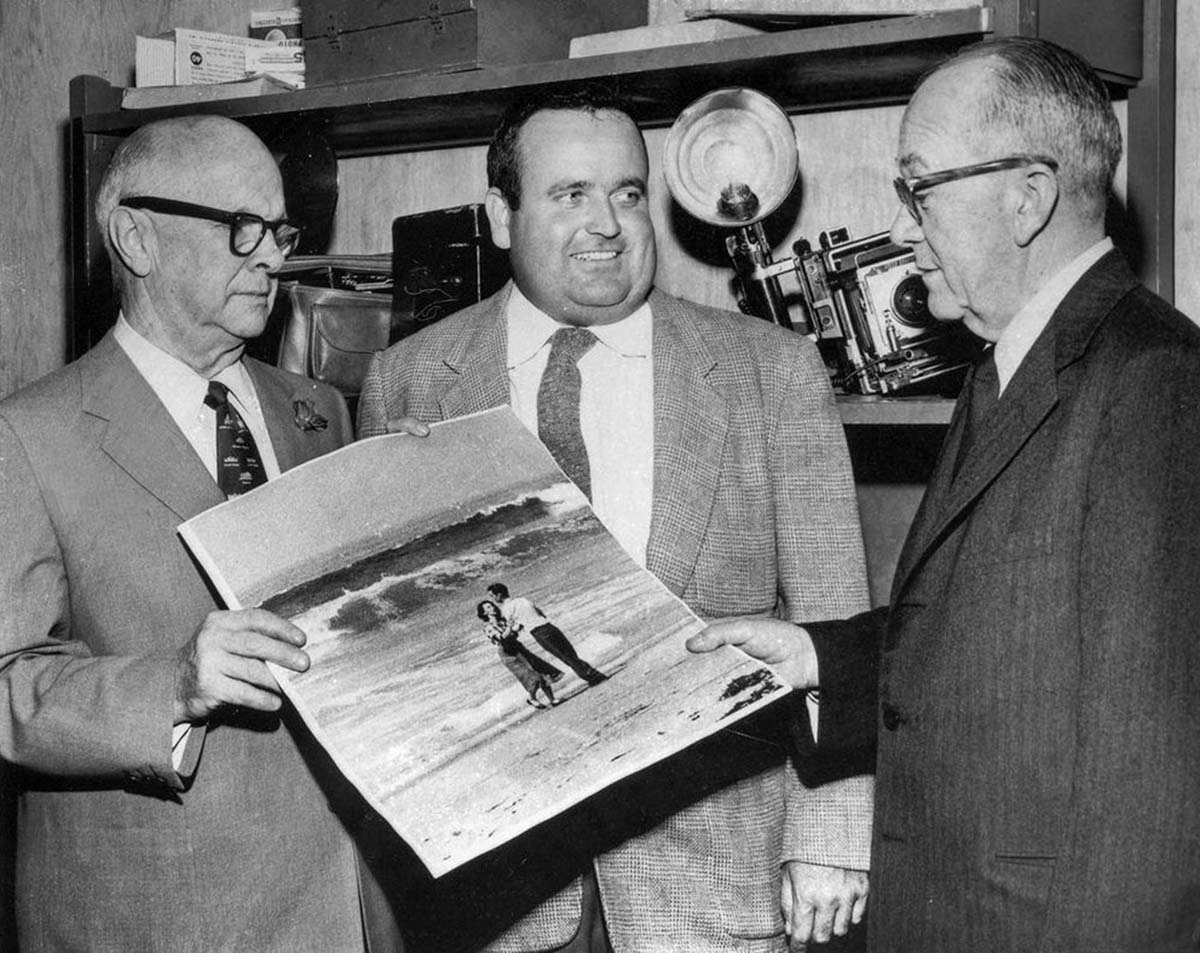“Tragedy By The Sea”: What Dreadful Incident Happened?
“Tragedy by the Sea” is a famous photograph that captures the raw emotion of a tragic event. The image, which won the prestigious 1955 Pulitzer Prize for press photography, is described as “poignant and profoundly moving” by the Pulitzer committee. It depicts a moment of profound loss and grief, touching the hearts of those who see it.
How the iconic photograph was captured

It was just a normal day in April 1954 for Los Angeles Times photographer John L. Gaunt, Jr. who was lounging in the front yard of his beachfront home in Hermosa Beach. Suddenly, he heard a neighbor yell, “Something’s happening on the beach!”, alerting Gaunt to something bad happening on the beach. Without hesitation, Gaunt grabbed his Rolleiflex camera and hurried over to find out the answer. As he approached, he saw a young couple holding each other tightly near the water’s edge. Against the backdrop of crashing waves, the distressed couple consistently moved back and forth and embraced desperately. Their body language told Gaunt a story that tightened his stomach.
Captivated by the scene, Gaunt quickly snapped the photo before the couple eventually walked away. He later described how he captured the image from a distance of 200 feet, with his camera set at 1/250 of a second and the aperture set at f16. Gaunt couldn’t imagine this photo would “haunt” him for a very long time later.
A dreadful incident happened

On April 2, 1954, tragedy struck when 19-month-old Michael went missing along the shores of Hermosa Beach, California. His parents, John and Lillian McDonald, were captured in a photograph standing on the beach after their son disappeared. Lillian recounted that the boy had wandered away from their yard. She called the police, and they immediately initiated a search for him.
It was later revealed that young Michael had been playing near the shoreline when the waves unexpectedly became aggressive, snatching him from the shallows. This heartbreaking turn of events left the McDonald family devastated as they grappled with the loss of the beloved child.
A woman named Beverly Murdock ran to a nearby police station to report a shocking sighting: a baby in the ocean, tangled in a patch of seaweed. She described the boy’s clothing, which matched the information Lillian had given to the police earlier. Frantic with worry, John McDonald paced back and forth on the beach, while Lillian tried to keep him from plunging into the water. All they could do was wait anxiously for magic.
As the hours passed and darkness descended, the search for the boy yielded no results, and authorities suspended their efforts for the night. Despite the growing darkness, John and Lillian steadfastly refused to leave the beach, clinging to hope and refusing to give up on the possibility of finding the missing child.
The search went on for days and continued into April 5. John and Lilian remained by the beach, keeping a constant vigil in the hopes of finding their son, Michael. It wasn’t until April 12th, a full ten days after he went missing, that Michael’s body was found. He was spotted near 4th Street in Manhattan Beach. On April 12, 1954, a woman spotted the boy’s body floating in the surf near her home, which was more than a mile away (1.6 km) from where he had vanished. She immediately pulled the body from the water and called the police.
Jack Gaunt: behind the lens of Pulitzer-Winning Photography

The photograph titled “Tragedy by the Sea” made headlines on the front page of The Times the next day. It went on to win the prestigious 1955 Pulitzer Prize for press photography, with the Pulitzer committee calling the photo “poignant and profoundly moving.” However, for Gaunt, the photographer behind the lens, the image initially weighed heavily on him, as his daughter recalled in Gaunt’s 2007 Times obituary written by staff writer Jon Thurber: ”…the image was hard for him to bear at first.”
She noted that he was just 31 when he took the photograph and had a 3-year-old daughter at home. The couple in the photograph lived locally and, although Gaunt did not know them, he knew people who did…
During his tenure at the paper, Gaunt, affectionately known as Jack, primarily served as the night-shift news photographer. His workday typically commenced around 3 or 4 p.m., extending well past midnight. He found great satisfaction in tackling the challenges of covering fires and other breaking news events.
The June 1955 Times employee publication Among Ourselves reported on how Gaunt heard the May 2, 1955, news:
Reporter Ted Sell broke the news of the Pulitzer award to Gaunt, who was busy printing pictures in the Editorial photo lab. Gaunt’s initial reaction was disbelief, exclaiming, “Gosh, fellas–I have to sit down.” He wanted to see the wire copy himself to confirm the news.
Shortly after, Editor L.D. Hotchkiss and City Editor Bud Lewis arrived to congratulate Gaunt officially, joined by most of the Editorial Department. Despite the excitement, he stated calmly: “I’m ill in my interior.”

